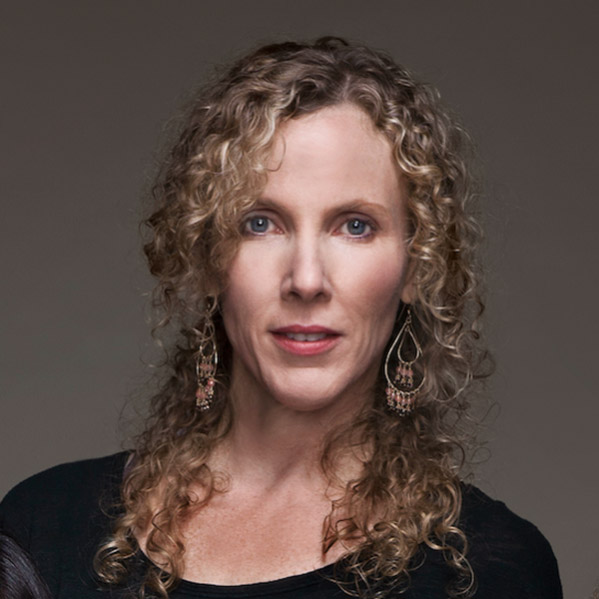Gibson: A roadmap is an expression of your strategy. It shows how projects fit together, along with a rough time estimate.
Roadmaps are a richly debated topic. On the one hand, they help teams to see how all the projects fit together. With technology teams, who have long lead-time plans, it's good to have advance notice of upcoming projects. On the other hand, a four quarter roadmap provides false confidence, given uncertainty about what will work or not. It's especially hard to guess the timing of projects, given this uncertainty.
When I share a roadmap, I express confidence about the next quarter's projects, but highlight that the content and timing of the subsequent quarters are highly speculative. There's lots of near-term learning that will cause plans to change.
I'm going to share now a stylized version of the Netflix roadmap, halfway through the year 2005. I've organized the six high-level product strategies: personalization, simple, social, margin, movie finding tools, and next-day DVD delivery on the left, and then I've shown sample projects to the right over time.
For instance, the personalization strategy, the key project in Q3 of 2005 is the Ratings Wizard. The next quarter focused on demographic data. The next quarter, algorithm tests to match people with movies they'll love. The key project in Q2 of 2006 in this example is optimizing the star rating, a simple exercise.
For each of these strategies, I have filled in the projects over time. I'll just do one more example. The key strategy is to keep Netflix easy and simple. The project that's key in Q3 of 2005 is day one experiments. The next quarter against easy and simple is contextual help systems. The next quarter is a simplified queue. The next quarter is day one DVD merchandising. For each of the strategies on the left, I shared what projects were going to happen over the next four quarters, and this is the concept of a rolling roadmap.
The roadmap articulates the focus and organization of the product team. Once the teams define the strategies, proxy metrics, and projects for their swim lane or pod, it's straightforward to complete the exercise. The roadmap is an artifact, an expression of your product strategy.
The roadmap does not have to show all the work, however. It is a high-level view that outlines the key projects in each swim lane along with the best guess of timing. What's missing in the Netflix example above is the technology infrastructure work. I also chose not to include the work in help and account. It doesn't have to include everything.
The roadmap tells a story about how the overall strategy for the product team might play out over time. When I put together the roadmap, I think of the company's board as the primary audience. They don't need all the details.
One note on organizing product teams. I favor structures where each product leader has a clear proxy metric that communicates what success looks like in their area. Todd, the product leader for personalization, had his percentage of members who rate at least 50 movies in their first six weeks metric. Meghan, the product leader focused on creating a simpler experience, had her percentage of members who add at least three titles to their queue metric. Proxy metrics provide radical role clarity. They help you to understand what success looks like.
Product strategy exercise number eight. This is the companion for the roadmap exercise. For each of your product swim lanes or pods, outline the projects against each strategy over four quarters. Put all of the projects into a roadmap like the one I've described to you already.
In the next essay, I will share ideas about how to encourage big, long-term thinking as you define your product strategy. Essay number eight is called The GLEe Model.
Suzanne: All right. I love the simplicity of your roadmap slide, again especially the way that it really starts to gel all of these concepts. We spoke about these in some of the previous Q&As how the product strategies that kind of win or prove themselves persist and evolve, and potentially become even cornerstones of the business over time. In the specific visual, and for those folks of you listening in you can go to the show notes and you'll see all of the assets there, in the specific visual you have it kind of neatly laid out like product strategy, quarter initiative. Product strategy quarter initiative. I guess my question for you is number one, is a single initiative per strategy per quarter a good benchmark or does it just make for a really balanced slide?
Gibson: More the latter. Here's what I'm trying to communicate. As a product leader you're trying to provide inspiration, and clarity, and direction to the whole organization. Sometimes I'm thinking about, what would I share with an investor or a board? Then the mega point is you don't have to share everything.
I am simply trying to create a story of how personalization might play out over time. I don't need to list two or three projects per quarter. I just want to list some key ones and I'm really just trying to get everybody a sense of what do I mean by personalization? These key projects. Generally people get way into too much detail. For instance, that audience of board members, board members, they're very financially oriented. They just want you to know that you care about building a business, you know EG, margin enhancement.
They're very data driven. Talk in terms of proxy metrics, and metrics. Then these are just projects or tactics. These are for instances of the projects that we're going to execute to move the metrics. The tricky thing about these roadmaps is many times for an investor CEO they see this as a commitment to what you're going to do, when. I try hard to disabuse that notion like, "Yeah, the first quarter this is important. We're going to do it but we're going to learn so much that our current plans in quarter two, three, and four might go out the window."
Now, do they remember I said that? Probably not, but I try hard to over-communicate that this is fluid, and we're going to learn a lot, and we'll make changes because of that. Don't view this as commitment. The thing that drives me crazy is roadmaps are actually pretty easy to build. But I'm encouraging people to think about it as a package of their overall product strategy and to make it a manifestation of their product strategy which is why I put strategies on the left as labels.
Suzanne: Yeah. I love the way that it looks. For a little more context on this though, because again I think it's helpful to sometimes get the high/low in these examples. You're talking about Netflix sort of circa 2005 I think in this piece. How big was the engineering team at that point?
Gibson: You know by the end of the year I think we had like 10 squads. For sure we had 100 engineers by that point, by the end of 2005.
Suzanne: Because you've heard me say, certainly our listeners have heard me say the official product management answer for everything is “it depends”. I'm asking you these tricky it depends questions like, how does this translate? Is one initiative per quarter per strategy appropriate? Of course it depends, and it depends on the size of the engineering team but I'm curious if you have in your experience a ball park of, you know to execute on a good project against the strategy, whether you've got 1 squad of 3 or whether you've got 10 squads of 3 this is an appropriate amount of time to think about rolling out an initiative well including iteration.
Gibson: Coming back to that conversation about just using the word strategy, I'm trying to get people to think in years, like what's the right amount of investment to make in a concept like social, or personalization, or instant delivery of DVDs? Humans naturally engaged in the short term, but they don't naturally engage in the longterm. That's another reason that I'm always trying to bring focus back to the strategy.
For me I tend to focus more on rate of pace and learning or cadence of experimentation because that's how you learn faster. It's a little tricky. At Netflix we actually didn't build stuff against a schedule. We launched stuff when we felt it was ready. There's one exception was the launch of watch instantly which was hard, because we had shared it with 40 press people before so it was scheduled for a date. It was really hard.
Anyways, no I don't have rules of thumb on how to think about the right amount of time or resources. The other thing I think about is are we investing the right amount of time energy in a particular area? If I can see the proxy metric in simple and easy moving up and to the right, or personalization, that's a signal that maybe we should be doubling down in those areas. Or in the area of friends and social which was not committing, it was not moving its proxy, that's when I started saying, "Okay, we've got too much resources about it and we need to double down in some other area." That's again where I'm using the proxy to evaluate progress and whether we're making the right amount of investment of people, and time, or not.

In this episode:
- Where do startups go wrong with implementing OKRs
- Can OKRs really scale for enterprise?
- What are pipelines and how do they change the way we think about product roadmaps?

In this episode:
- From retail to product management
- Why relationship building is the number one required skill a product manager could have
- The value of having confidence with humility

In this episode:
- Establishing a clear vision of your career path
- Using metrics to answer burning product questions
- What product managers can learn from biology
